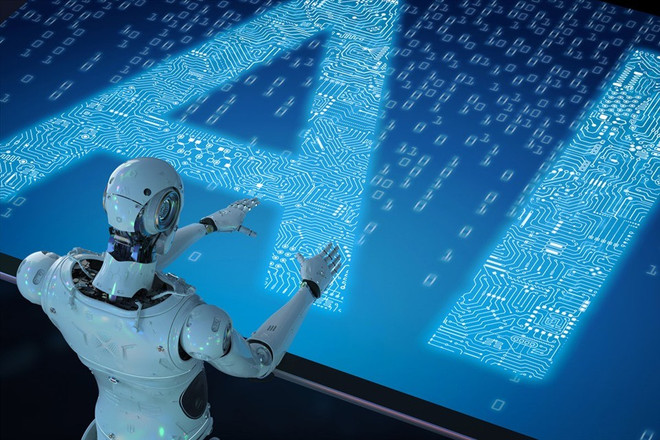Designing smarter artificial intelligence (AI) technologies, combined with green data infrastructure, can help Southeast Asia realize its digital ambitions without compromising its energy transition goals.
Southeast Asia’s digital economy is booming. With rapid growth in e-commerce, fintech and AI services, the region is seeing a surge in electricity demand – especially from data centers.
These facilities operate 24/7 and require large-capacity cooling systems, placing a continuous operating burden on the national grid.
Globally, data centers are expected to consume about 415TWh of electricity by 2024 – more than the total consumption of Indonesia.
By 2030, the electricity usage of these centers is forecast to surpass Japan's current consumption.
While the majority of global data center expansion is taking place in the US, China and Europe, Southeast Asia is rapidly catching up, with demand in the region forecast to more than double by 2030.
National estimates have shown a major challenge for the grid. In Malaysia, electricity demand from data centers could increase sevenfold by 2030, reaching about 30% of the country’s total consumption.
In Indonesia, demand is expected to nearly quadruple, while in the Philippines it could jump more than 18 times.
The surge in demand from data centers also risks competing for electricity and water with residential areas and communities – particularly in areas with limited power grids and limited water supplies – raising broader social and equity concerns.
If this growing demand is met primarily by grids that rely heavily on fossil fuels, it risks slowing – or even derailing – the region’s clean energy transition.
As of 2022, fossil fuels, led by coal, will still provide more than 70% of Southeast Asia's electricity, despite the continued expansion of renewable energy.
In that context, a key part of the solution lies in hardware innovation, particularly through the development of “Green Data Centers.”
These facilities employ advanced technologies such as high-efficiency cooling systems, waste heat recycling, workload shifting to off-peak hours, and renewable energy integration.
With these improvements, data centers can become much more energy efficient, and more importantly, they can serve as levers to promote clean energy deployment.
Southeast Asian countries are already moving in this direction. Singapore’s Green Data Center Roadmap 2024 sets industry-leading energy efficiency standards and offers incentives for renewable energy use. Malaysia is preparing to launch a sustainable data center framework by the end of 2025.
Besides hardware improvements, other powerful levers can be leveraged at the software layer.

One solution is to design smarter, leaner AI, by building applications that deliver similar results but with less computational effort, thereby reducing the need for both infrastructure and energy.
In practice, this can be achieved by deploying smaller, task-specific AI models instead of bulky general-purpose models; using smaller but higher-quality datasets during model training; applying model compression techniques like pruning and quantization to reduce computational load; and applying more efficient algorithms for both training and inference.
These measures have significant potential to improve software efficiency and cut energy use. For example, Google says its Gemini model, which combines more efficient software architectures and algorithms with hardware improvements, consumes significantly less energy than many previous public estimates.
Additionally, creating the right supportive environment is also important.
For years, AI developers—from engineers building platform models to application creators—have typically been rewarded for accuracy, speed, and functionality, not energy efficiency.
This is starting to change as rising computational costs and token costs force efficiency into the discussion, but most efforts remain spontaneous.
Without a clear policy signal to factor energy efficiency into AI application development, progress may stagnate and energy-intensive software may gain the upper hand if energy costs fall or priorities change.
This is where governments and companies can come together. Instead of directly regulating AI design, policymakers can create an enabling environment by promoting standards for reporting on the energy use of AI applications.
For their part, companies can collaborate by sharing data, testing lightweight applications, and presenting best practices in algorithm optimization.
Public authorities should also consider prioritizing essential social needs over non-essential uses, ensuring the grid continues to serve the broader interests of society as AI demand increases./.
Source: https://www.vietnamplus.vn/xanh-hoa-ai-nhiem-vu-cap-bach-cho-dong-nam-a-post1061088.vnp



![[Photo] National Assembly Chairman Tran Thanh Man chairs the 8th Conference of full-time National Assembly deputies](https://vphoto.vietnam.vn/thumb/1200x675/vietnam/resource/IMAGE/2025/9/29/2c21459bc38d44ffaacd679ab9a0477c)
![[Photo] Many streets in Hanoi were flooded due to the effects of storm Bualoi](https://vphoto.vietnam.vn/thumb/1200x675/vietnam/resource/IMAGE/2025/9/29/18b658aa0fa2495c927ade4bbe0096df)

![[Photo] General Secretary To Lam attends the ceremony to celebrate the 80th anniversary of the post and telecommunications sector and the 66th anniversary of the science and technology sector.](https://vphoto.vietnam.vn/thumb/1200x675/vietnam/resource/IMAGE/2025/9/29/8e86b39b8fe44121a2b14a031f4cef46)
![[Photo] General Secretary To Lam receives US Ambassador to Vietnam Marc Knapper](https://vphoto.vietnam.vn/thumb/1200x675/vietnam/resource/IMAGE/2025/9/29/c8fd0761aa184da7814aee57d87c49b3)

































































































Comment (0)